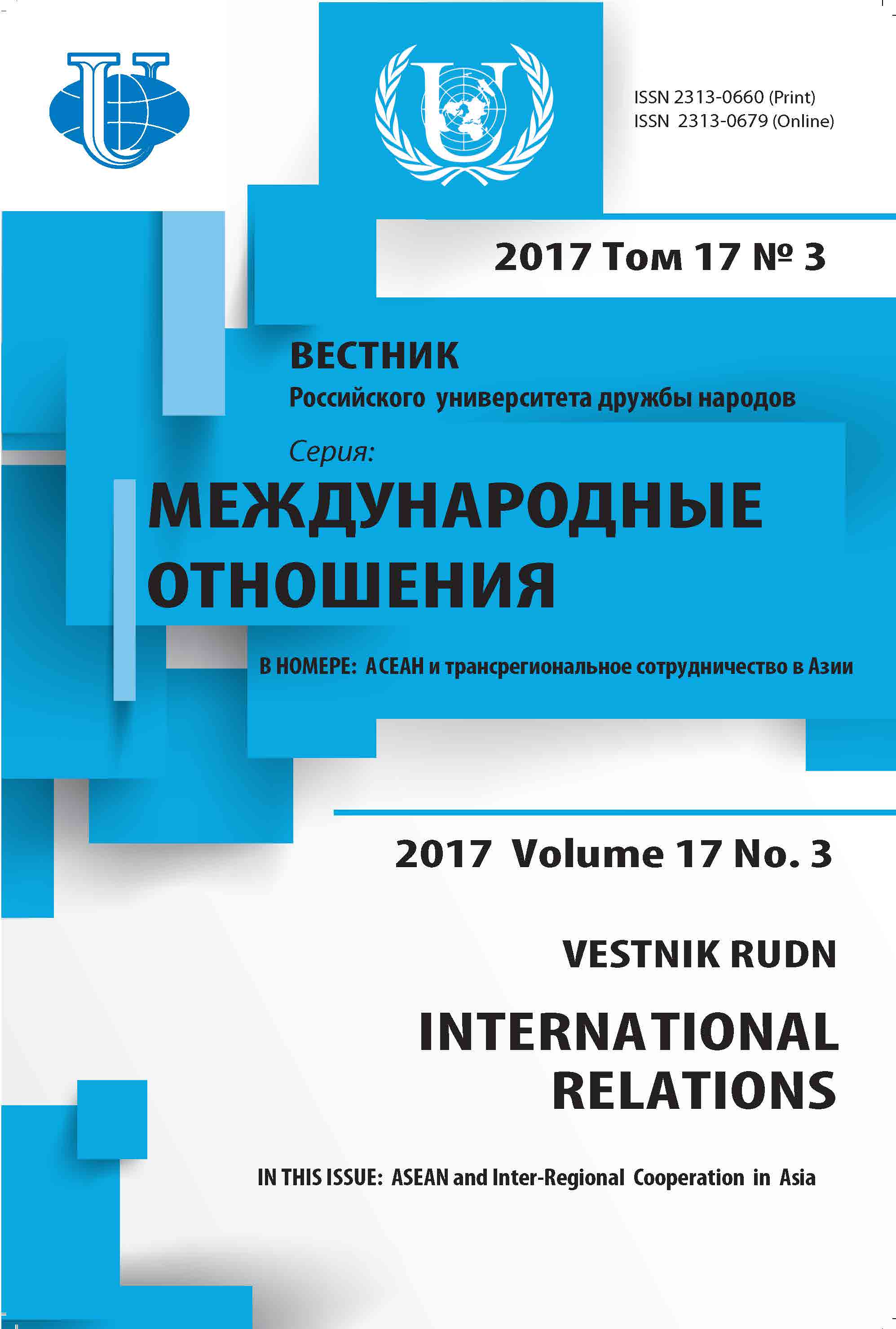RUSSIAN-VIETNAMESE MILITARY-TECHNICAL COOPERATION: CHALLENGES AND OPPORTUNITIES FOR RUSSIA
- Authors: Fedorov NV1
-
Affiliations:
- Saint-Petersburg State University, Saint-Petersburg, Russia
- Issue: Vol 17, No 3 (2017): ASEAN and Inter-Regional Cooperation in Asia
- Pages: 496-507
- Section: THEMATIC DOSSIER
- URL: https://journals.rudn.ru/international-relations/article/view/16762
- DOI: https://doi.org/10.22363/2313-0660-2017-17-3-496-507
Cite item
Full Text
Abstract
Vietnam plays important role in Russian policy in the Asia-Pacific region. Military-technical cooperation holds special position in Russian-Vietnamese relations. The aim of the article is the detection of the special features of military-technical cooperation between Russia and Vietnam, and also challenges and opportunities it provides for Russian policy. After the collapse of the USSR defense interaction between Russia and Vietnam was determined by commercial foundations. Vietnam needed new Russian weapons to protect its interests, first of all, in the South China Sea. For Moscow military-technical cooperation with Vietnam got economic significance. But later there was a rise of political dimension of cooperation in this sphere, influenced by some external factors. The period of the 2000-2010s was marked by growth of arms sales from Russia to Vietnam. It was mostly caused by the escalation of the South China Sea conflict, for which US-Chinese contradictions began to play an increasing role. Military-technical coopera-tion with Vietnam influenced some aspects of policy of Russia in the region. There was an increase of indi-rect involvement of Russia into the South China Sea conflict. Russian arms sales for Vietnam became one of problems in Russian-Chinese relations. But Russia and China could cope with these disputes, partly because of enlargement of their interaction in international relations, including the demonstration of similar position for some aspects of the South China Sea conflict. In the framework of development of defense cooperation with Vietnam, Russia could get special conditions of access to facilities of Cam Ranh Bay that strengthened its strategic positions in the region. Russian cooperation with Hanoi in military-technical field and general reinforcement of Russian positions in Vietnam might be also a reason for contradictions with the US.
About the authors
N V Fedorov
Saint-Petersburg State University, Saint-Petersburg, Russia
Author for correspondence.
Email: nfedorov@yandex.ru
PhD in History, Associate Professor, Associate Professor of the Department of American Studies of St. Petersburg State University
References
- Baev, P.K. & Tonneson, S. (2015). Can Russia keep its special ties with Vietnam while moving closer and closer to China? International Area Studies Review, 18(3), 312—325. doi: 10.1177/2233865915596709.
- Blank, S. & Kim, Y. (2016). Does Russo-Chinese Partnership Threaten America’s Interests in Asia? Orbis, 60 (1), 112—127. doi: 10.1016/j.orbis.2015.12.010.
- Buszynski, L. (2006). Russia and Southeast Asia: A New Relationship. Contemporary Southeast Asia, 28 (2), 276—296.
- Chang, F.K. (2012). China’s Naval Rise and the South China Sea: An Operational Assessment. Orbis, 56 (1), 19—38.
- Do, Min' Kao (2015). Vietnam and the South China Sea: situation and trends. V'etnamskie issledo¬vaniya, 5, 138—160. (in Russ.).
- Ivanov, A.V. & Lukin, A.V. (2013). Activation of foreign policy of China in the Asia-Pacific region and interests of Russia. Ezhegodnik Instituta mezhdunarodnykh issledovanii MGIMO (U) MID Rossiiskoi Federatsii, 3, 155—178. (in Russ.).
- Lokshin, G.M. (2013). The South China Sea: hard search for accord. Moscow: IDV RAN. (in Russ.).
- Lokshin, G.M. (2014). Political cooperation of Russia and Vietnam. Yugo-Vostochnaya Aziya: Aktual'nye problemy razvitiya, 25, 55—63. (in Russ.).
- Lokshin, G.M. (2015). The escalation of the crisis in the South China Sea in 2014. V'etnamskie issledovaniya, 5, 96—118. (in Russ.).
- Mankoff, J. (2015). Russia’s Asia Pivot: Confrontation or Cooperation? Asia Policy, 19, 65—87.
- Murasheva, G.F. (2013). Is there an alternative to status-quo in the territorial dispute in the South China Sea? Yugo-Vostochnaya Aziya: Aktual'nye problemy razvitiya, 20, 5—16. (in Russ.).
- Novakova, O.V. & Loginova, V.N. (2014). Vietnam “at home” and in the APR (through the historical prism)]. Yugo-Vostochnaya Aziya: Aktual'nye problemy razvitiya, 23, 60—88. (in Russ.).
- Russian-Chinese relations in the modern period: By the 15th anniversary of the signing of the Treaty of Good-Neighborliness and Friendly Cooperation between the Russian Federation and the People’s Republic of China. (2016). Problemy Dal'nego Vostoka, 4, 5—43. (in Russ.).
- Simon, S. (2015). South China Sea Wariness. Comparative Connections, 17 (1), 45—57.
- Storey, I. & Thayer, C.A. (2001). Cam Ranh Bay: Past Imperfect, Future Conditional. Contemporary Southeast Asia, 21 (3), 452—473.
- Thayer, C.A. (2016). Vietnam’s Strategy of “Cooperating and Struggling” with China over Maritime Disputes in the South China Sea. Journal of Asian Security and International Affairs, 3 (1), 200—220.
- Thuc, Thi Tran, Vysotskaya, G., Vieira, A. & Ferreira-Pereira, L.C. (2013). Vietnam’s strategic hedging vis-à-vis China: the roles of the European Union and Russia. Revista Brasileira de Política Internacional, 56 (1), 163—182.
- Tsvetov, A.P. (2015). Vietnam-US rapprochement in 2014 — beginning of 2015: trends, reasons, obstacles. Yugo-Vostochnaya Aziya: Aktual'nye problemy razvitiya, 26, 156—173. (in Russ.).
- Wishnick, E. (2017). In search of the “Other” in Asia: Russia-China relations revisited. The Pacific Review, 30 (1), 114—132.
- Yu, Bin (2016). China-Russia Relations: Politics of “Reluctant Allies”. Comparative Connections, 18 (2), 129—144.











